↧
Diane McLean
↧
Bénédicte Gelé
Artiste peintre Français / French artist painter
Très tôt dans la vie de Bénédicte Gelé, le cheval est omniprésent sans pour autant être une évidence. Sans hérédité équestre, elle naît en 1975 et vit en banlieue parisienne, l'animal reste plat sur les magazines ou loin au fond d'un pré aperçu lors des vacances. Pourtant, une fascination débordante, un envoûtement certain poussent Bénédicte Gelé à multiplier et forcer les rencontres avec l'animal.
Après un Bac Arts appliqués et un BTS Communication visuelle, elle devient graphiste puis directrice artistique, tombe amoureuse d'une petite jument vive et maline et dessine sans limite, imperturbable, des chevaux.
En 2004, son parcours équestre et professionnel semble se fondre, s'imbriquer l'un dans l'autre, indissociable, dont la clef de voûte est le cheval.
Horses have always played a part in Bénédicte Gelé’s life, although they have not always been in the limelight.
Born in 1975 and brought up in the Parisian suburbs, she had no prior history with horses. The animal remained a two-dimensional object in magazines or sometimes a figure in the background of a distant meadow when on holiday. However, an overwhelming fascination, an almost unexplainable attraction and a particular bewitchment encouraged her to strive and spend more and more time with these animals.
After obtaining a baccalaureate in Applied Arts and a further certificate in Visual Communication, she became a graphic designer and then artistic director before falling in love with a lively, clever little mare, she started drawing horses with quiet obsession.
In 2004, her professional and equestrian lives seemed to merge with horses, of course, as the cornerstone.
↧
↧
Wangjia
↧
Falk2021
↧
Jess Cross
"First and foremost, my paintings are designed to tell a story. I utilize traditional portraiture, abstracted by an additional layer of information created by projections of light, in order to form a final product that is open to interpretation. In this way, the viewer has as much of a role as the artist in managing the meaning of the work on display.
I started the "Goddess" series after the birth of my son, while trying to figure out how to balance being an artist and a mother. A goddess must be beautiful yet strong; a warrior as well as a mother. Motherhood was romanticized in Ancient Greece in a way it is not today, and as an artist, teacher, wife and mother, I am trying to achieve the same balance these classical figures attained, juggling several different roles at once.
In a larger view, we are all a party to that balancing act. This series explores the universal dichotomy between strength and vulnerability; the projections can be interpreted as bruising or as war paint, and the viewer can take part in the ongoing conversation of the role of femininity: mother, child, warrior, victim; bearer of life or harbinger of death.
My current body of prints and paintings further explores themes of life, growth, death and decay. A series of bone prints were inspired by a painful post-partum experience in which I received a spinal blood patch to relieve debilitating headaches. I began the series with a small spine print, and led up to a Beauchene (exploded) skull. Future plans include additional hard ground etchings of anatomy.
With the newest “Immortal” paintings, I am attempting to evoke a sense of deterioration along with an idealized beauty. Greek god sculptures have been projected and obscured across the subjects, and the image is further abstracted through a rough application of paint and enhanced color. With this series, I believe I have taken my concept a step further by bringing the quality of the medium into the “information” for the viewer, who is ultimately made aware of the mortal behind the god."
Jess Cross
Jess Cross Davis
1981
Born in Freedom, Pennsylvania
Lives and works in Salisbury, Maryland
Education
2007 - Pennsylvania Academy of the Fine Arts Philadelphia, PA
MFA Art, Painting emphasis
2004 - Salisbury University Salisbury , MD
BFA Art, Painting emphasis
2000 - 2002 University of Maryland Baltimore County Baltimore , MD
Awards and Grants
2011 - Art Institute and Gallery, National Juried Show, Second Place Award of Excellence
2010 - Art Institute and Gallery, Delmarva Regional Exhibition, Second Place
2010 - Art Institute and Gallery, Big Exhibition, First Place
2010 - Art Institute and Gallery, January Show, Honorable Mention
2005 - PAFA Women's Board Scholarship
2005 - Art Institute and Gallery, Special Award for Painting
2005 - Art Institute and Gallery, Special Award for Sculpture
2004 - SU President's Art Award for Two Dimensional Studio
2002 - Salisbury University Art Scholarship
2000 - UMBC Artist Scholar (Awarded four-year full scholarship)
2000 - Maryland Artists Equity Foundation Scholarship
1999 - Maryland Distinguished Scholar in the Arts Finalist
Curatorial Projects
2006 - Spring Arts Festival, Art Institute and Gallery. Salisbury, MD
2005 - Spring Arts Festival, Art Institute and Gallery. Salisbury, MD
↧
↧
Doris Althaus
Biography
Born in 1970 in Solothurn
1986 - 1989 Education ceramic / ceramic Kohler Biel
1989 - 1990 Study Abroad in England
1993 travel time in South America
1989 - Today, various training courses for ceramics
1991 - present professional activities in various institutions as an instructor for ceramics
Appearances in school project weeks
Work in employment workshops Area IV / integration, in sheltered workshops, with disabled people and asylum seekers
"Die Künstlerin Doris Althaus aus Solothurn versteht es meisterlich, ihren Figuren aus Keramik Leben einzuhauchen. Ob sich ihre Figuren in einer dichten Gruppe auf einem zart grün gefärbten, sinnlich geformten Diwan räkeln oder auf einer lang gezogenen mauerähnlichen Bank den Vorbeiziehenden entgegenblicken, immer hat man das Gefühl, dass sie sich im nächsten Moment zu bewegen begännen, aufstünden, davonliefen oder sonstwie ihre Position veränderten. Kinder drängen sich im Kreis um eine erwachsene Person, spielen oder suchen Nähe, wieder andere verharren in sich selbst gekehrt, so als träumten sie sich etwas Schönes. Zahlreiche der kleinen Figurenobjekte befinden sich in einer ganz besondern Bewegung, in einem Bewegungsablauf, den man in all seiner Ausstrahlung nachvollziehen kann. Faszinierend sind die grossen Figuren, die im Raum stehen und von ihm Besitz ergreifen, so als wären sie lebendig und nicht aus Ton geschaffen. Jedes Detail ist fein ausgearbeitet, und doch wirken die formalen Betonungen ungemein schlicht, diszipliniert, zum Teil minimalistisch. Eckiges und auch Spitziges überwiegt und gibt den Figuren etwas Irrationales, zum Teil Surrealistisches, so als betrachte man in einem Traum ganz in der Ferne Kinder beim Spiel, Menschen im Gespräch oder beim gemütlichen Beieinandersein. Die Gesichter der grossen Figuren haben etwas Entrücktes an sich. Wohl kann man Augen orten, der Blick aber bleibt irgendwie fern und unfassbar. Wunderschöne Farbtöne kommen zum Tragen, Pastelltöne würde man bei einem Maler sagen, denn kein Farbton überwiegt oder dominiert. Die Farben spielen miteinander und geben den Figuren Poesie und Leichtigkeit.
Es ist erstaunlich, wenn eine Keramikkünstlerin in dieser Feinheit mit ihrem Material umgehen kann und so lebendige Objekte, Figuren schafft, die bewegen und jeden in ihren Bann ziehen. Man spürt, dass die Künstlerin einen starken Bezug zur Bewegung hat, zur sportlichen und zur tänzerischen, dass sie es liebt, diese Bewegungen einzufangen, nicht im strengen Sinn, sondern spielerisch, so dass die künstlerische Freiheit das Spontane und Zufällige zulässt.
Erlebt man ihre Figuren in dichter Fülle, erkennt man noch eindrücklicher, wie vielschichtig und vielseitig sie mit Formen, Veränderungen im Ausdruck, mit Farbklängen, mit feinen Verzierungen und Betonungen umgehen kann. Ihre künstlerische Arbeit hinterlässt unvergessliche Spuren und man freut sich auf jede ihrer neuen Präsentationen.
Madeleine Schüpfer, Kulturjournalistin Olten"
↧
Marianne Eggimann
Marianne Eggimann
Born in 1980, Sumiswald, Switzerland
1999-2003 School of Design, ceramic section, Bern, Switzerland
1998-1999 School of Design, Basel, Switzerland
1997-1998 Berufs, Fach, Fortbildunsschule, Bern, Switzerland
2007 Winner of the Frechen, Ceramic Competition, Forum of contemporary ceramics, Halle, Germany
2007 Young ceramist prize, 55th International biennal of ceramics, Faenza, Italy
2006 Frechen Ceramic Competition, Ceramic Magazine Europ, Frechen, Germany
2006 1st Prize, Young European Ceramic Competition, St-Quentin-la-Poterie, France
2003 Link-Preis, ceramic section, School of Design, Bern, Switzerland
Marianne Eggimann produces small objects in ceramics. She also uses glass to create a mix of materials that is often a problem for other artists.
She justifies this by setting it in a genealogy that goes back to the souvenir snow globes that, as children, we would turn over again and again, fascinated by this snow-covered, motionless world, deadly dull but fascinating. She does, indeed often speak to us of death. She makes objects that resemble curios for rather strange old ladies who are, shall we say, “arsenic and old lace”, for slightly deranged collectors and entomologists, and lovers of incongruity and morbid eccentricity. These objects are easily understood, sometimes amusing, and often sinister and quirky. Triviality is king, with a devastating humour that is sensitive and tender but always incisive. The little world of childhood souvenir snow globes freezes over and turns to ice, and rightly so. There are so many “unnatural” crimes, or rather, crimes “against nature”.
Beneath a glass dome or in the – de facto – circumscribed space of the display object, the trinket, there is a world, a story to tell or imagine, in which man does not have the best role and in which nature suffers at almost every turn. There’s no room for innocence in all that. We are all, beneath our glass dome, in our little world, an object in the hands of others, a criminal or a potential victim, an object that needs to be preserved and protected, just like nature and the beings that live in it.
Yves Peltier
↧
Rachel Kneebone
"...The pairing brought to light themes of "sexuality, death, and sin."
Rachel Kneebone was born in Oxfordshire. She graduated in 1997 with a First Class BA (Hons) degree from U.W.E, Bristol. In 2004, Kneebone graduated with an MA in sculpture from the Royal College of Art, London.
In 2005, she was nominated for the MaxMara Art Prize for Women alongside Anne Hardy, Anj Smith, Margaret Salmon and Donna Huddleston. In the same year, Kneebone contributed work to a show The Way We Work at the Camden Arts Centre, London.
In 2005, Kneebone was commissioned to do a wall sculpture by Mario Testino for the Diana, Princess of Wales exhibition at Kensington Palace.
In July – August 2006, Kneebone had her first solo exhibition in London at Madder Rose gallery, which included a number of sculptures such as Loves all-worshipped tomb, where all love's pilgrims come (2005). All the works in this show sold out on the opening night. Reviewer Katarina Horrox commented that Kneebone's "carefully crafted sculptures witness various organic forms merging ambiguously into human body-parts as they climb elegantly up walls. Suggestive yet sensitive, her creations harp back to Ovid's Metamorphoses, whilst their fixed immobility implies a transgression of time and motion."
In 2007, The Evening Standard highlighted Kneebone as one to watch thanks to her "beautiful and sexy hand-moulded porcelain sculptures". In September 2007, Kneebone's work was included in the opening group exhibition An Archaeology at Project Space 176 in London's Chalk Farm area.
In 2008, Kneebone began to be represented by Jay Jopling and the White Cube gallery in London. Kneebone's first solo show with White Cube The Descent was in February 2009.
In 2008, Tracey Emin selected a work by Kneebone to include in her room at the Royal Academy's Summer Exhibition. Emin said: "Her work is exciting for me – porcelain figurines, vulnerable and with an eighteenth-century look. I like Georgian things – my house was built in 1729, and I like simplicity and straight lines."
She is known for finely sculpted white porcelain works of various organic forms merging ambiguously into human body-parts. Her work has been described as depicting an "erotic state of flux" and "celebrating forms of transgression, beauty and seduction."
Her work is said to be influenced by ancient Greek and Roman myths in Ovid's poem Metamorphoses and the "seductive, mythological paintings" of 18th century artist François Boucher.
In January 2009, Kneebone spoke to the Tate Etc. magazine about William Blake's work The Primaeval Giants Sunk in the Soil (1824–1827), from Illustrations to Dante's Divine Comedy, 8th circle of Hell.
A 2012 exhibition of Kneebone's work at the Brooklyn Museum entitled Rachel Kneebone: Regarding Rodin showcased 8 of her original works next to 15 works from Auguste Rodin that Kneebone had personally selected. The pairing brought to light themes of "sexuality, death, and sin."
↧
Jacob Foran Art
Jacob Foran (b. 1983, US) received dual BFA degrees in Visual Art from the University of Illinois and his MFA from the University of Washington. He has been an artist in residence at the Archie Bray Foundation for Ceramic Arts. His work has been included in more than sixty exhibitions in the United States and published internationally. Most notable being: “Games of Antiquities with Tim Roda” at Gasser & Grunert Inc. in New York, NY; SOFA NYC with Ann Nathan Gallery in Chicago, IL; "Subconscious Emotion" inside Surfaces Magazine in Beijing, China; "Headspace: Jacob Foran" in Designboom in Milan, Italy. Foran received the First Prize Award in Marge Brown Kalodner’s International Graduate Student Exhibition in Philadelphia, PA. He was granted the Kottler/Noritake Scholarship while attending the UW and the Kate Neal Kinley Memorial Fellowship from the University of Illinois. In summer of 2013, Jacob will be an artist in residence at the European Ceramic Workcenter, Netherlands. Foran presently works and teaches at Lakeside Upper School in Seattle, WA.
↧
↧
Lisa Nocentini
..I am interested in the processes of growing and changing, and how connections with other people influence our growth. My work attempts to investigate our relationship with our own body form and how we come to terms with its transformations through time...The hard fired clay form is an attempt to create a real physical definition of the abstract inner image...
...The figures I make tend to convey a certain ambiguity between the concepts of childhood and maturity, gracefulness and obesity and also about the issue: “to show or not to show”: the need to expose but also fear that forces one to hide away and be preserved from the viewer’s cruel gaze.
The need to expose is the need to communicate inner landscapes, light and soft coloured emotions that inhabit our souls through the juxtaposition of varied elements, elements that sometimes seem to have no obvious connection. Thanks to their being brought together, these images resonate and create a visual dialogue…
...I like to think of my work as 3-dimensional illustrations of stories that each viewer can make up on his or her own: a patchwork story or a 3-D puzzle to be completed by the viewer. In this sense I still consider my work utilitarian...
... In traditional folk tales, animals have magical qualities, they talk and are often the driving force of the story. Animal figures also appear as metaphors of particular traits of human character. In folk art, which is a strong visual reference for my work, often the lines between man and animal are lines of fusion...nothing has a single invariable shape...
Lisa Nocentini was born in Florence, Italy, in 1955.
She studied at the Istituto Statale d’Arte di Firenze where she obtained a Diploma in Applied Art and later she studied painting and ceramics at the Ecole des Beaux Arts of Aix-en Provence, France, and at the Accademia di Belle Arti of Florence.
During her training as a ceramicist she participated in workshops held by potters David Leach, John Colbeck, Sebastian Blackie, Ruth Ann Tudball, Takeshi Yasuda, Giovanni Cimatti, Walter Keeler, Ian Gregory.
From 1978 to 1981 she apprenticed with italian ceramicist Bruno Gambone and at the end of 1981 she set up her own studio in Florence and began producing functional stoneware pottery that she sold to shops and galleries in Italy, Europe and the U.S.A.
Starting from 1993 her work began to evolve towards sculptural ceramics.
As a potter and then as a sculptor, she has participated in exhibitions and competitions throughout Italy, in Germany, Switzerland, Greece and in the U.S.A.
Her pieces can be found in important private collections in Italy and in other countries (M. Theodorakis, Athens, Greece; Jane Fortune and Bob Hesse, Indianapolis, USA; Mary Beckinsale and Jules Maidoff, Firenze; Cinzia TH Torrini, Roma; Raffaello Monteverde, Roma; Alessandra Borsetti Venier; etc.)
She collaborates regularly with important specialized galleries such as Galleria Zerotre, Orvieto, Galleria Gulliver, Marciana Marina (LI), Galleria Techne Contemporanea, Montelupo Fiorentino (Florence), Galleria L’Albero Celeste, S. Gimignano (SI), La Barbagianna, una casa per l’arte contemporanea, Pontassieve (Florence), Galleria Il Fischio, Torino, Galleria Amphisbaena, Modena, Galleria Archivio, Mantova, Galleria Davico, Torino.
↧
Gabi Hamm
"Gabi Hamm’s paintings evoke memories. Her predominantly classical themes including landscapes, interiors, or situational female portraits appeal to our memory of images and make situations come alive that we are familiar with. Actually, the artist uses photographic material such as newspaper images, postcards, reproduced paintings, or self-made photographs as a basis for her works. Gabi Hamm applies thoughtful brush strokes to sketch the essence of her paintings on a monochrome background. The colour palette is always restrained, and the scenes, which bear resemblance with still-lifes, densify to form mostly mysterious, fragile worlds of images that always include a reflection of abstract ways of looking at things.
Though the artist uses well-known imagery and a traditional artistic technique such as painting the works by Gabi Hamm are by no means retrogressive. On the contrary, the details that Hamm selects from the underlying picture rather convey a silent dignity that states an alternative view as opposed to the fast-moving and hectic world we live in. Girlish faces, primeval trunks of trees, and situational arrangements that you might mistake for trivial genre scenes turn into manifestations of a microcosm of a kind that almost completely evades perception in our lives. Gabi Hamm creates an image time-out in order to counter the superabundance of images and impressions that the human eye must continually cope with in our times. The reduced elements presented on her canvases bring relief to the strained look and allow to focus on what is essential.
This effect is reinforced by the diffuse light situation in the pictures. While our medialized world of images relies on shrill colours and sharp contours the motifs and protagonists chosen by Gabi Hamm become blurred to the point where they change into soft figures that seem to breathe and hover against their backgrounds almost like ghosts. This apparent silence, however, does not mean that these images are void of conflicts: The humble look of a girl causes the beholder to halt in confusion, and the same effect may be caused by a forest landscape from which dark clouds of smoke billow up into the sky. This is why the peace that the beholder believes to perceive in Gabi Hamm’s paintings at first sight is often based on something morbid."
"It is Gabi Hamm’s complex strategy for finding her motifs that determines her position as an artist. Invariably she takes pre-existing images as her starting point, no matter whether they are (her own) photographs or reproductions from magazines or art books she happens to chance on. When it comes to selecting her material she acts as much upon a formal as an emotional impulse, for both criteria seem equally important to her. The attraction painterly problems hold for her and an affective reference to the selected pictorial model are prerequisites for beginning her work. If the viewer can grasp the formal challenges by looking at the tradition of painting, locating the affective interest is considerably more difficult. Gabi Hamm describes it as a sudden moment of awareness which pictorial models have to trigger in her. How can this be clarified? It is a general experience that certain situations have the potential to take one out of one’s goal-oriented actions, directing attention on visual perception instead. For a short moment a certain sight, a light-reflex or a tiny detail takes centre stage, capturing one’s attention. Although in retrospect no good enough reason can be found as to why this should be so, it is a moment etched upon one’s memory, which can be elicited by a similar situation even many years later. Often, however, we are not able to reconstruct the past situation, all that remains being a vague memory of a familiar “mood”. Gabi Hamm is only interested in pictorial models that succeed in triggering such an awareness in her, out of which she then develops her pictorial idea.
Highly-charged material such as this as her starting point, she then settles on a monochrome surface which is to be her painterly basis. Colour and size of the panel are carefully chosen in accordance with her pictorial idea, which, at that point, is still quite vague. Out of this basic colour the image is then being developed, as if modelled from variations and contrasts of one single colour, gradually gaining in visibility. Every single step has to be thoroughly tested as to compatibility with basic colour and pictorial model and the potential of these two starting points will be revealed only when the painting is finished. The models contain essential elements that help create the new image. In order to make them visible, however, they have to be lifted out of the model. Hamm’s method of painting is like a filtering process that eliminates all that distracts or conceals, highlighting the parts that were conceived intuitively. What induced the artist to choose a certain model is eventually revealed, and transformed at the same time. “Extract” might be the best word for describing the result of this process.
The selection of models has to be called intuitive, the result, however, corresponds to an analysis by painterly means. Yet, it has to be stressed that the model’s analysis is not what is behind her work. Rather, the model is gradually left behind, making way to a new image. Thus, the viewer does not have to be familiar with Hamm’s models. The picture that stands at the end of a process of painterly transformation does not in any way refer to the material it grew out of. Even those very emotions that were crucial for selecting the models of reference are turned into general experiences – this becomes clear each time one has this feeling of coming across one’s very own experiences when looking at Hamm’s pictures.
The indispensable key to the picture’s success is starting on them without knowing the outcome. The artist has to keep up the fragile condition of an attitude open to new things so as not to fall prey to availing herself of things known or experienced already, and the more often her working process succeeds in producing viable results the more significant this becomes. The second strategy of Gabi Hamm’s work is thus a constant renewal of the method described above.
Klaus Görner"
1956
Geboren in Stuttgart, Württemberg (DE)
1976 - 1977
Staatliche Hochschule für Bildende Kunst, Stuttgart
1981 - 1986
Städelschule, Staatliche Hochschule für Bildende Künste, Frankfurt/ Main
Stipendium
1998
Reisestipendium der Hessischen Kulturstiftung, Wiesbaden
2004
Arbeitsstipendium der Stiftung Kunstfonds Bonn
Lebt und arbeitet in Frankfurt am Main (DE)
Geboren in Stuttgart, Württemberg (DE)
1976 - 1977
Staatliche Hochschule für Bildende Kunst, Stuttgart
1981 - 1986
Städelschule, Staatliche Hochschule für Bildende Künste, Frankfurt/ Main
Stipendium
1998
Reisestipendium der Hessischen Kulturstiftung, Wiesbaden
2004
Arbeitsstipendium der Stiftung Kunstfonds Bonn
Lebt und arbeitet in Frankfurt am Main (DE)
↧
Li Chengzhong - 李成忠
Mr. Li Chengzhong was born in July, 1945 in the city of Qujing in the province of Yunnan. He has been an artist for 35 years. He is a member of the China Art Association, a member of China Artist Association, a director in Yunnan Art Association, a member of Yunnan Artist Association, an honorary chairman of city of Qujing Artist Association, a registered Second Level artist in China and a distinguished guest professor in the art school of Qujing in Yunnan. Also, he was once the head of this art school and later became a chairman there. He also served as the president of the Yunnan Province Artists Association.
Mr. Li has long been an advocate of original contemporary art, oil painting, and is a creator of today’s modern art and its research. His art collection was exhibited in China’s 6th, 7th, and 8th yearly art exhibition. On numerous occasions, his work received awards and high accolades from the Chinese Art Society particularly during the 13th yearly art exhibition; he won second price recognition plus numerous provincial 1st, 2nd, & 3rd level trophies. Proudly, he was presented a distinguished award as “Lau Sang Style Artist” for the year 80-90 era. Mr. Li has received high recognition for his work in its exhibitions in USA, Canada, Holland, Denmark, Japan, Korea, Taiwan and Hong Kong. The collectors of his art include the China Art Museum, Peking Art Institute, Peking International Art Museum and various provincial and other international museums. In 1999, his artwork was listed in China’s modern art page 16 in “1999’s Kunming World Art Exhibition” and it indicated that his artwork was the only “treasure-able art collection”. Reprints of his artworks were limited for distribution. His artwork is listed in “complete Chinese modern art library” and “China 100 years art collection series” as part of China’s precious art library. In 1993 and 1995 respectively, Mr. Li’s artwork was displayed in the China Art Museum and Peking International Art Exhibition. Again in year 2000, he participated in Peking and China Art Exhibition.
↧
Hisaya Taira - 平久彌
↧
↧
Hiroki Yasutomi - 安冨洋貴
Everyone must restrain his desires in a group. We have to communicate with others, keeping real intentions for ourselves and wearing the mask of social roles. I know this since I am a kid. But once the night comes, restrained spirits are released. Darkness melt the doors of our expansive hearts. My wavelength tunes in to the anonymous sight of the night in a corner of town, to a moment in the everyday night. I rely and identify with sights and moments. They are the irreplaceable ground of what I believe. So, I want to keep them in full without a change, together with all the signs and yearnings I felt at the time. In order to pile dozens or hundreds of pencil strokes, I clearly come to feel “I am keeping the sight and the moment”. I fill a support medium with my thoughts like working with a weaving loom.
Hiroki Yasutomi
Pencil is the most familiar writing instrument for Japanese generations born after WWII. Before they enter into elementary school, children start using pencil, drawing familiar things and imagining landscapes in the margins of the papers. For grown up’s the pencil is such a useful way to sketch our mind during these insipid meetings. For many Japanese, it is an extension of the body. This is why there are so many artists who use pencils not only for drawing but also tableaux. From experts like Susumu Kinoshita, Norio Shinoda, and Naoko Majima to up-and-coming artists like Hiroki Yasutomi.
Born in Kagawa prefecture, Hiroki Yasutomi moved to the Kansai region to attend college, and he has produced works in pencil since his graduate school days. The multilayered touches of the pencil as it tries to engrave the traces of Hiroki’s work creates the gradation of a fine woven cloth. It is the simple and strong beauty of forms and light extracted from common scenery like a silent movie of the past century. It is the depiction of water shaped by the climate of his hometown and the pictorial spaces which make us feel like we are there. Because of the attraction like that, he drew attention of people in art world from his student days, and he was selected in L’Espoir Exhibition which is a gateway to success for young artists to show their works in Ginza, Tokyo. In 2006, he received the Excellence Prize as the second place at Outstanding Rising Artists Exhibition, Seiji Togo Memorial Sompo Japan Museum of Art. He held solo exhibition at Imura Art Gallery in the same year, at Takamatsu Tenmaya in 2007, at Kurashiki Tenmaya in 2009, at Shinjuku Takashimaya in 2012.
Hiroki’s work has also been exhibited in museums, educational institutions, and group shows with the artists he respects. In 2008, he held solo exhibition at Nagi Museum Of Contemporary Art. At the exhibition titled Pencil World at Chukyo University C-Square, they selected him with Susumu Kinoshita and the other experts. In 2007 and 2009, at the three person’s show, he presented with Masaaki Yashima whom he has respected since his college days. Often featuring white roses as motif in recent years, in 2012, he was selected with Koji Kinutani, Reiji Hiramatsu and Hiroshi Noda and the other leading artists in LA VIE EN ROSE, a group show focusing on work with a rose theme.
Hiroki has exhibited not only in Japan but throughout Asia. His work was presented at KIAF 2006 in Seoul, and CIGE 2008 in Beijing. His works have been introduced to the secondary market through Christie’s and Sotheby’s Hong Kong.
Biography
| Born in Kagawa, Japan | |
| 2004 | M.F.A., in Kyoto University of Art and Design, Kyoto |
↧
Lo Chan Peng 羅展鵬
.jpg)
Taiwanese 1983
Born in Jia Yi, Lo Chan Peng received master degree with National Taiwan Normal University, Department of Fine Arts. He was granted Kaohsiung Awards in 2008 and The Chi-Mei Art Cultivation Awards in 2007. Solo exhibitions: ART HK 2010; 2009 "Strawberry Generation Studio", Aki Gallery, Taipei. Selected group exhibitions: 2010 "YES TAIWAN: 2010 Taiwan Biennial", National Taiwan museum of Fine Arts, Taiwan; 2010 "Post-Adolescence", National Taiwan Museum of Fine Arts, Taichung and Kuandu Museum of Fine Arts, Taipei; 2009 "Small World", E105 Gallery, Bonn, Germany; 2005 "National Art Exhibition of the Republic of China traveling exhibition", Taichung, Taipei, Kaohsiung.
↧
Oh Sujin - Oh Su Jin - 吳殊珍
"Korean artist Oh Sujin obtained a BFA degree from the prestigious Hongik University in Seoul in 2009. She currently lives and works in Seoul, Korea.
Oh’s art looks at the world with a sure and steady gaze. She turns her attention to faces chosen for how they reflect our time and presents them in pieces executed with artistic and expressive skill guided by a brilliant technique. Selected from websites and magazines, Oh’s portrait subjects have no connection to her. The artist explains, “Mass media is our only connection. My portraits are not conceived from a particular aesthetic point of view. Rather, they are inspired by something that grabs my attention, a main concern, a powerful image. Still, if they do have an underlying aesthetic, it lies in the process of moving an image from its place of origin into one of my portraits. In this sense, I think they are similar to Richard Prince’s ‘re-photograph’ technique.”"
↧
Yih-Han Wu - WU Yih-Han - 吳 逸 寒
1982 born in Stuttgart
2000~2006 National Taipei University of the Arts
2008~2010 Hochschule für Bildende Künste Münster bei Prof. Hermann Joseph Kuhna
2010~ Akademie der Bildenden Künste München bei Prof.Anke Doberauer
GROUP EXHIBITIONS
2012 Art Taipei 2012, Taipei World Trade Center I, Taipei, Taiwan
2012 Next Super Star II, CANSART, Taipei, Taiwan
2012 Contemporary portraiture, ARTHIS, Taichung, Taiwan
2012 Young Art Taipei 2012, Sheraton-taipei, Taipei, Taiwan
2012 Y.E.S., Taiwan-- Young Emerging Stars, Taiwan, AKI Gallery, Taipei, Taiwan
2012 Mancy's Tokyo Art Nights, Tokyo, Japan
2011 Kalte Hund,München, Germany
2006 Deswegen reden wir nicht über Kunst,Taipei, Taiwan
2005 From skin to skin,Taipei, Taiwan
↧
↧
Lian Yu-Pei - 連瑜佩
↧
John Byrd
↧
Wei Shaodong
Wei Shaodong takes inspiration from classical master painters, both Western and Chinese, from eminent Chinese historical figures and from the Chinese landscape painting tradition. He depicts icons of modern times, such as aircraft, firearms and electronica, against a background of the lush tropical foliage of his native land. This surreal amalgam of technology and the natural world is then incorporated into a classical setting, thus creating striking and thought provoking images.
Wei Shaodong was born in 1971 in Guangxi province, studied art at university in Beijing, and is now an artist and a lecturer in art.
↧
.jpg)
.jpg)
.jpg)
.jpg)
.jpg)
.jpg)
.jpg)
.jpg)
.jpg)
.jpg)
.jpg)
.jpg)
.jpg)
.jpg)
.jpg)
.jpg)
.jpg)
.jpg)
.jpg)
.jpg)
.jpg)
.jpg)
.jpg)
.jpg)
.jpg)
.jpg)
.jpg)
.jpg)
.jpg)
.jpg)
.jpg)
.jpg)
.jpg)
.jpg)
.jpg)
.jpg)
.jpg)
.jpg)
.jpg)
.jpg)
.jpg)
.jpg)
.jpg)
.jpg)
.jpg)
.jpg)
.jpg)
.jpg)
.jpg)
.jpg)
.jpg)
.jpg)
.jpg)
.jpg)
.jpg)
.jpg)
.jpg)
.jpg)
.jpg)
.jpg)
.jpg)
.jpg)
.jpg)
.png)
.jpg)
.jpg)
.jpg)
.png)
.jpg)
.jpg)
.jpg)
.jpg)
.jpg)
.jpg)
.jpg)
.jpg)
.jpg)
.jpg)
.jpg)
.jpg)
.jpg)
.jpg)
.jpg)
.jpg)
.jpg)
.jpg)
.jpg)
.jpg)
.jpg)
.jpg)
.jpg)
.jpg)
.jpg)
.jpg)
.jpg)
.jpg)
.jpg)
.jpg)
.jpg)
.jpg)
.jpg)
.jpg)
.jpg)
.jpg)
.jpg)
.jpg)
.jpg)
.jpg)
.jpg)
.jpg)
.jpg)
.jpg)
.jpg)
.jpg)
.jpg)
.jpg)
.jpg)
.jpg)
.jpg)
.jpg)
.jpg)
.jpg)
.jpg)
.jpg)
.jpg)
.jpg)
.jpg)
.jpg)
.jpg)
.jpg)
.jpg)
.jpg)


.jpg)
.jpg)
.jpg)

.jpg)
.jpg)
.jpg)
.jpg)
.jpg)
.jpg)
.jpg)
.jpg)
.jpg)
.jpg)
.jpg)
.jpg)
.jpg)
.jpg)




.jpg)
.jpg)
.jpg)
.jpg)
.jpg)




.jpg)
.jpg)
.jpg)
.jpg)
.jpg)
.jpg)
.jpg)
.jpg)
.jpg)
.jpg)
.jpg)
.jpg)
.jpg)
.jpg)
.jpg)
.jpg)
.jpg)
.jpg)
.jpg)
.jpg)
.jpg)
.jpg)
.jpg)
.jpg)
.jpg)
.jpg)
.jpg)
.jpg)
.jpg)
.png)
.jpg)
.jpg)
.jpg)
.jpg)
.jpg)
.jpg)
.jpg)
.jpg)
.jpg)
.jpg)
.jpg)
.jpg)
.jpg)
.jpg)
.jpg)
.jpg)
.jpg)
.jpg)
.jpg)
.jpg)
.jpg)
.jpg)
.jpg)
.jpg)
.jpg)
.jpg)
.jpg)
.jpg)
.jpg)
.jpg)
.jpg)
.jpg)
.jpg)
.jpg)
.jpg)
.jpg)
.jpg)
.jpg)
.jpg)
.jpg)
.jpg)
.jpg)
.jpg)
.jpg)










.jpg)
.jpg)
.jpg)
.jpg)
.jpg)
.jpg)
.jpg)
.jpg)
.jpg)
++(3).jpg)
.jpg)
.jpg)
.jpg)
.jpg)
.jpg)
.jpg)
.jpg)
.jpg)
.jpg)
.jpg)
.jpg)
.jpg)
.jpg)
.jpg)
.jpg)
.jpg)
.jpg)
.jpg)
.jpg)
.jpg)
.jpg)
.jpg)
.jpg)
.jpg)
.jpg)
.jpg)
.jpg)
.jpg)
.jpg)
.jpg)
.jpg)
.jpg)
.jpg)
.jpg)
.jpg)
.jpg)
.jpg)
.jpg)
.jpg)
.jpg)
.jpg)
.jpg)
.jpg)
.jpg)
.jpg)
.jpg)
.jpg)
.jpg)
.jpg)
.jpg)
.jpg)
.jpg)
.jpg)
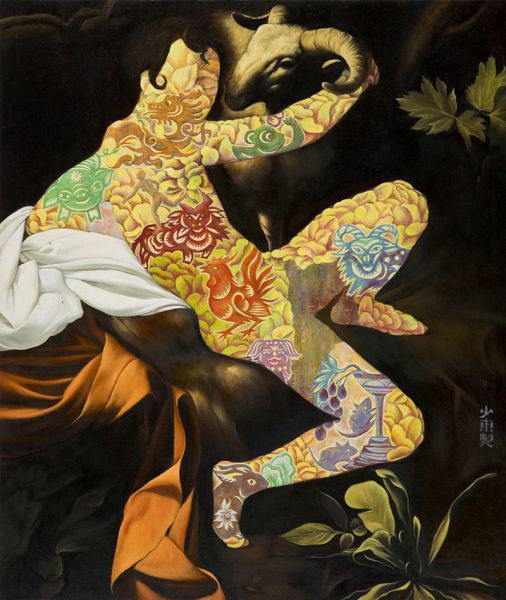.jpg)
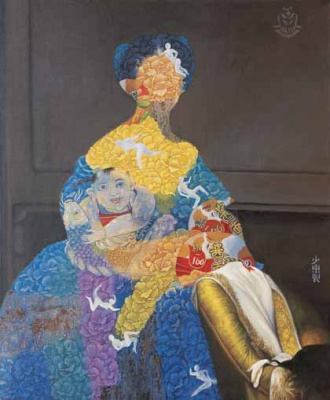.jpg)
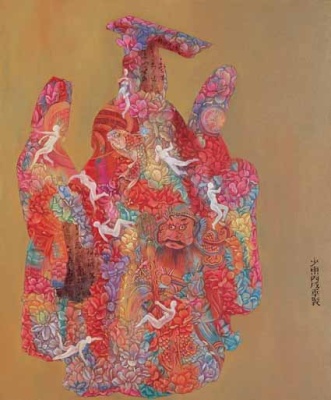.jpg)
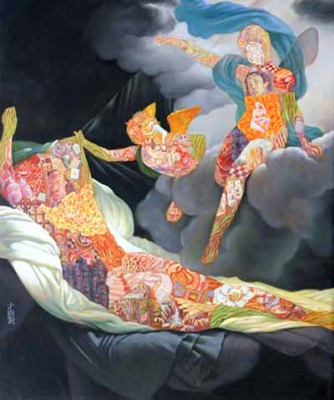.jpg)
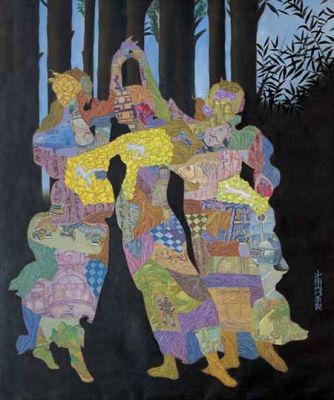.jpg)
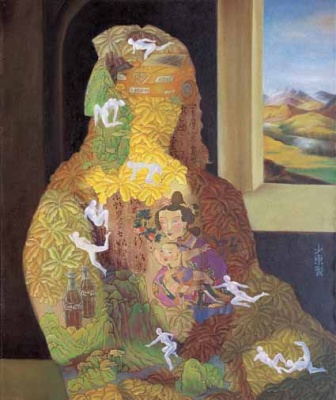.jpg)
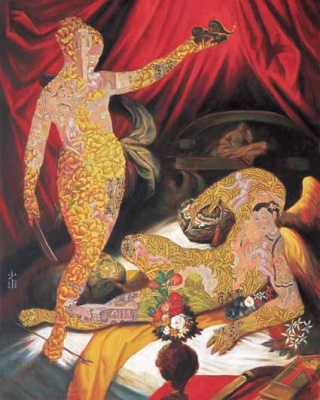.jpg)
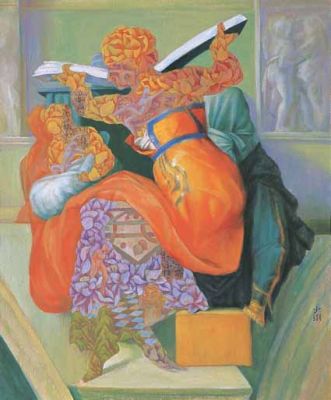.jpg)
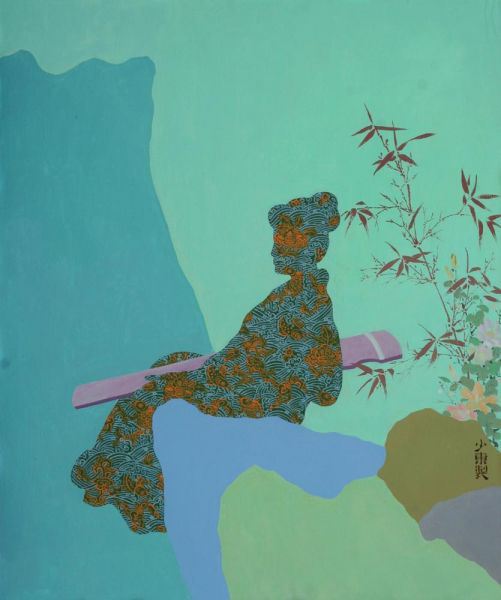.jpg)
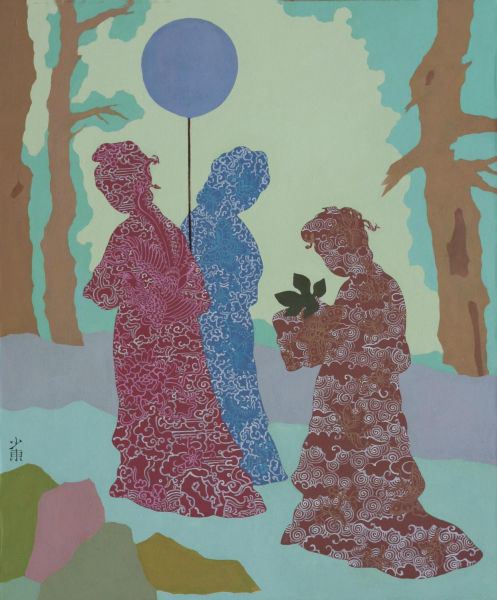.jpg)
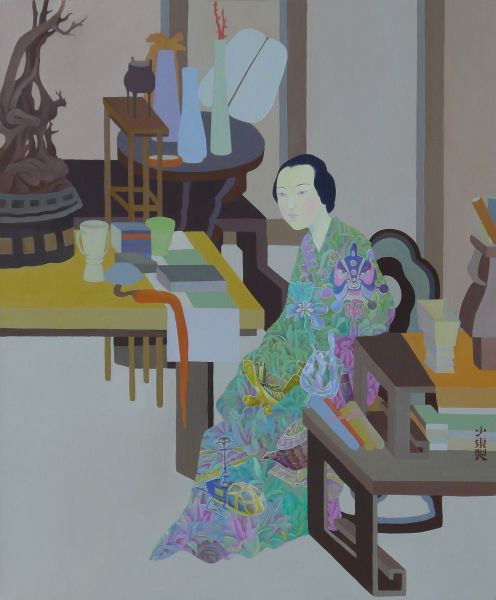.jpg)
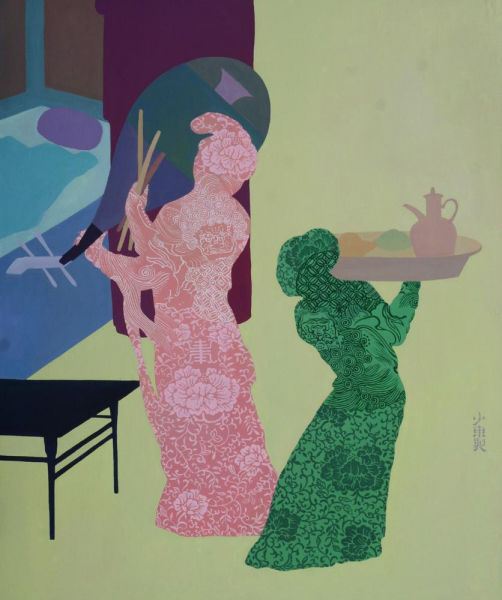.jpg)
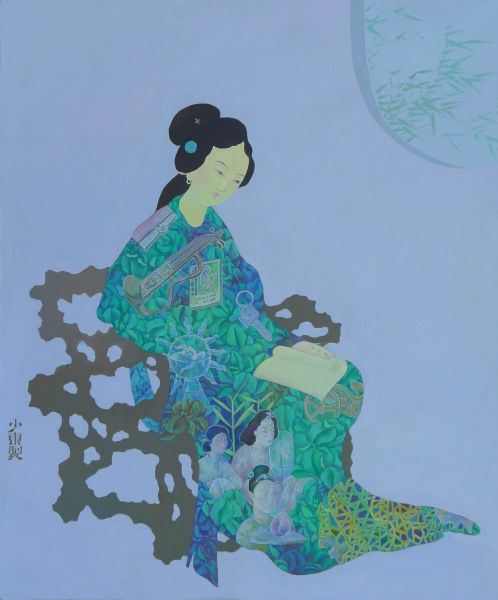.jpg)
.jpg)
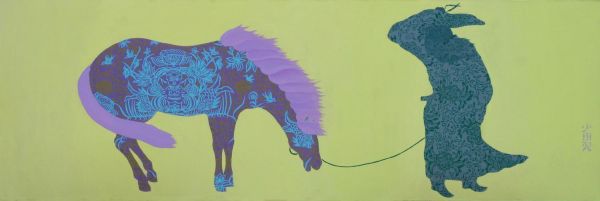.jpg)
.jpg)
.jpg)
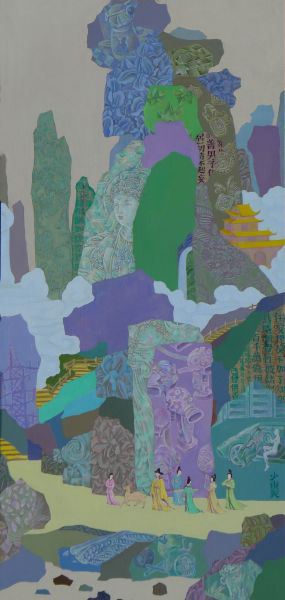.jpg)
.jpg)
.jpg)
.jpg)